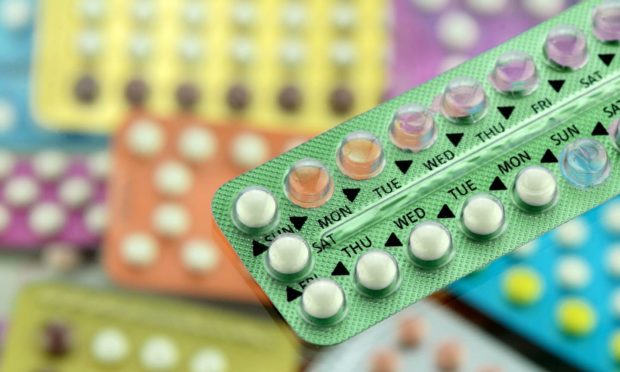Blood clot links have been made with Covid infection and, very rarely, after receiving AstraZeneca or Pfizer jabs. But what are the risks when taking different types of “combined” hormonal contraception?
And which of these poses greater risk of blood clots?
What is combined contraception?
Combined contraceptions release hormones into the bloodstream to prevent pregnancy. This stops ovulation from occurring.
The most well-known method of combined contraception is the combined contraceptive pill.
When taken properly it is more than 99% effective at preventing pregnancy.
One pill is taken every day for 21 days, followed by a break for seven days, and during this week users bleed like during a period.
Once the seven day break is complete, users start the 21-day cycle again.
Some of the positives of taking the combined pill include reduced risk of cancer of the ovaries, womb and colon, reduced symptoms of premenstrual syndrome (PMS) and reduction in acne.
However, there are some downsides, including severe mood swings, increased blood pressure and it does not offer protection against sexually transmitted infections (STIs).
Other methods of combined contraception include the vaginal ring and the contraceptive patch.
What is the blood clot risk?
Though the risk of blood clots due to the combined pill is still relatively low, it is clearly far higher than the likelihood of developing a blood clot following the Oxford jag.
Member of the JCVI Professor Adam Finn tells @SeanFletcherTV why the JCVI has advised under 30s to take an alternative vaccine.
He also compares the risk of the vaccine to the risk of blood clots posed by taking the contraceptive pill. pic.twitter.com/RKoJ7nW6EE
— Good Morning Britain (@GMB) April 8, 2021
The NHS states the combined pill “has been linked to an increased risk of some serious health conditions, such as blood clots and breast cancer”.
Oestrogen – used in the combined pill – has an effect on the blood, making it more “sticky” and so slightly more likely to form clots.
The progesterone only pill is not thought to carry an increased risk of blood clotting.
Speaking in April, Professor Adam Finn of the Joint Committee on Vaccination and Immunisation said: “The risks of thrombosis that come with taking the pill are very much higher than the risks that we were just seeing on those slides [referencing the Oxford vaccine].”
How bad is a blood clot?
Blood clots are extremely serious and require urgent treatment.
If left untreated, blood clots can lead to stroke, heart attacks, aneurysms and pulmonary embolisms. In worst case scenarios, they can be fatal.
If found early, blood clots can be easy to treat with blood thinners and other medication.
This is why it’s so important to know the signs of a blood clot in the early stages.
Symptoms of a blood clot include:
- Throbbing or cramping pain, swelling, redness and warmth in a leg or arm
- Sudden breathlessness, sharp chest pain and a cough or coughing up bloodSeek an urgent GP appointment or dial 111 if you think you have a blood clot.

